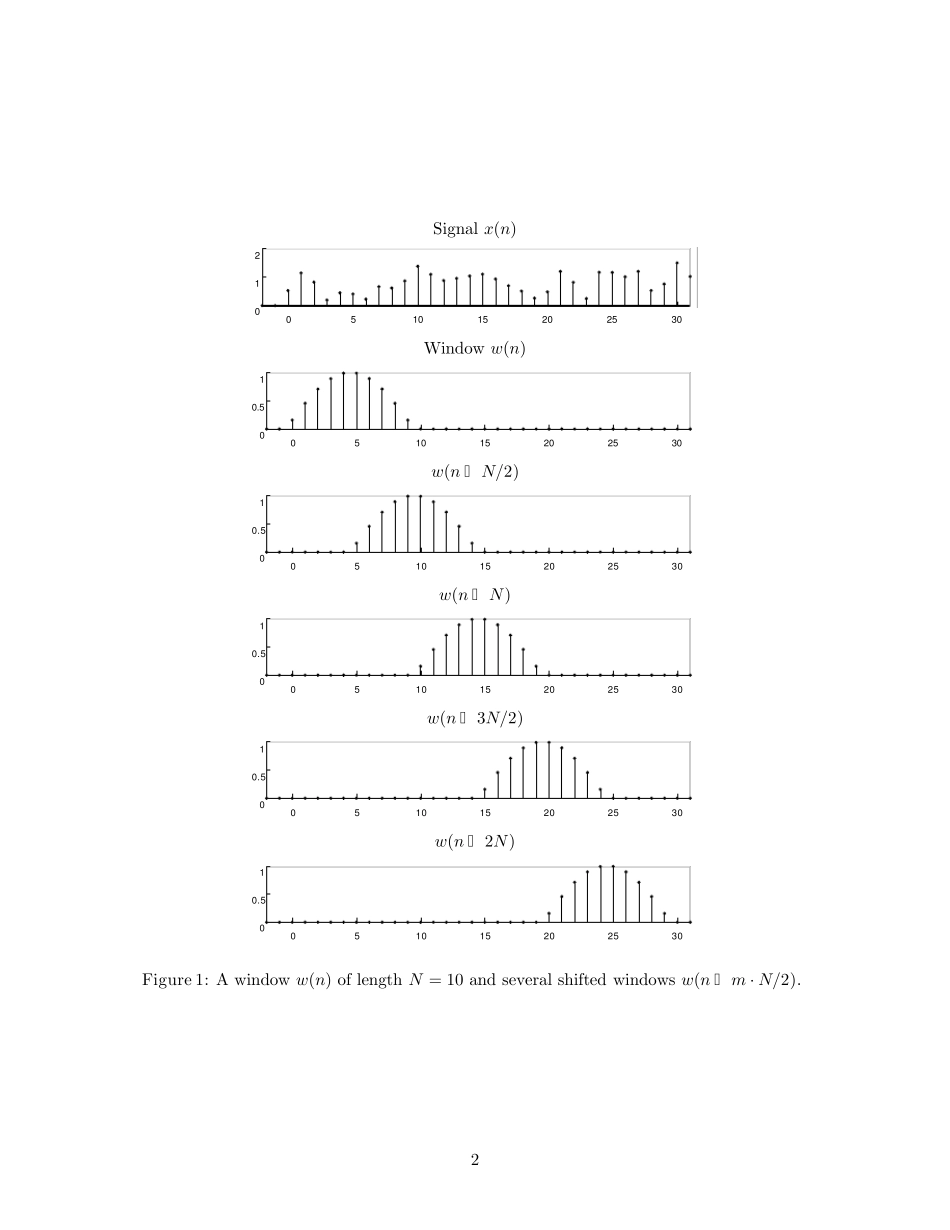Short-Time Fourier Transform and Its InverseIvan W. SelesnickApril 14, 20091IntroductionThe short-time Fourier transform (STFT) of a signal consists of the Fourier transform of overlappingwindowed blocks of the signal. In this note, we assume the overlapping is by 50% and we derive theperfect reconstruction condition for the window function, denoted w(n).The window w(n) is assumed to be supported (non-zero) for n = 0, . . . , N −1 . For example,Figure 1 shows a window of length N = 10. In this example, the window is a symmetric half-cyclesine window. The N-point half-cycle sine window is given byw(n) = sin πN (n + 0.5),n = 0, . . . , N −1.( 1 )T h efi g u r eshows several shifted windows. The shifted windows are shifted by half the length of thewindow. (In practice, the window is much longer than 10 samples. A short window is used here forillustration.)The m-th windowed block of the signal x(n) is given by x(n) ·w(n −m ·N/2). For example,Figure 2 shows several windowed blocks. The m-th windowed block is denoted as s(m, n):s(m, n) := x(n) ·w(n −m ·N/2)(2)For example, Figure 2 shows the m-th windowed block for m = 0, . . . , 4 .T h es h o r t - t i m eFourier transform is obtained by taking the DTFT of each windowed block:S(m, ω) := DTFT{x(n) ·w(n −m ·N/2)}(3)The short-timeFourier transform of a discrete-time signal x(n) is denoted byS(m, ω) = STFT{x(n)}.In practice, the DTFT is computed using the DFT or a zero-padded DFT.2Inverse STFTThe inverse STFT begins with the inverse DTFT of S(m, ω) to recover s(m, n).s(m, n) = DTFT−1 {S(m, ω)}1Signal x(n)051 01 52 02 53 0012 Window w(n)051 01 52 02 53 000 .51 w(n − N/2)051 01 52 02 53 000 .51 w(n − N)05...


